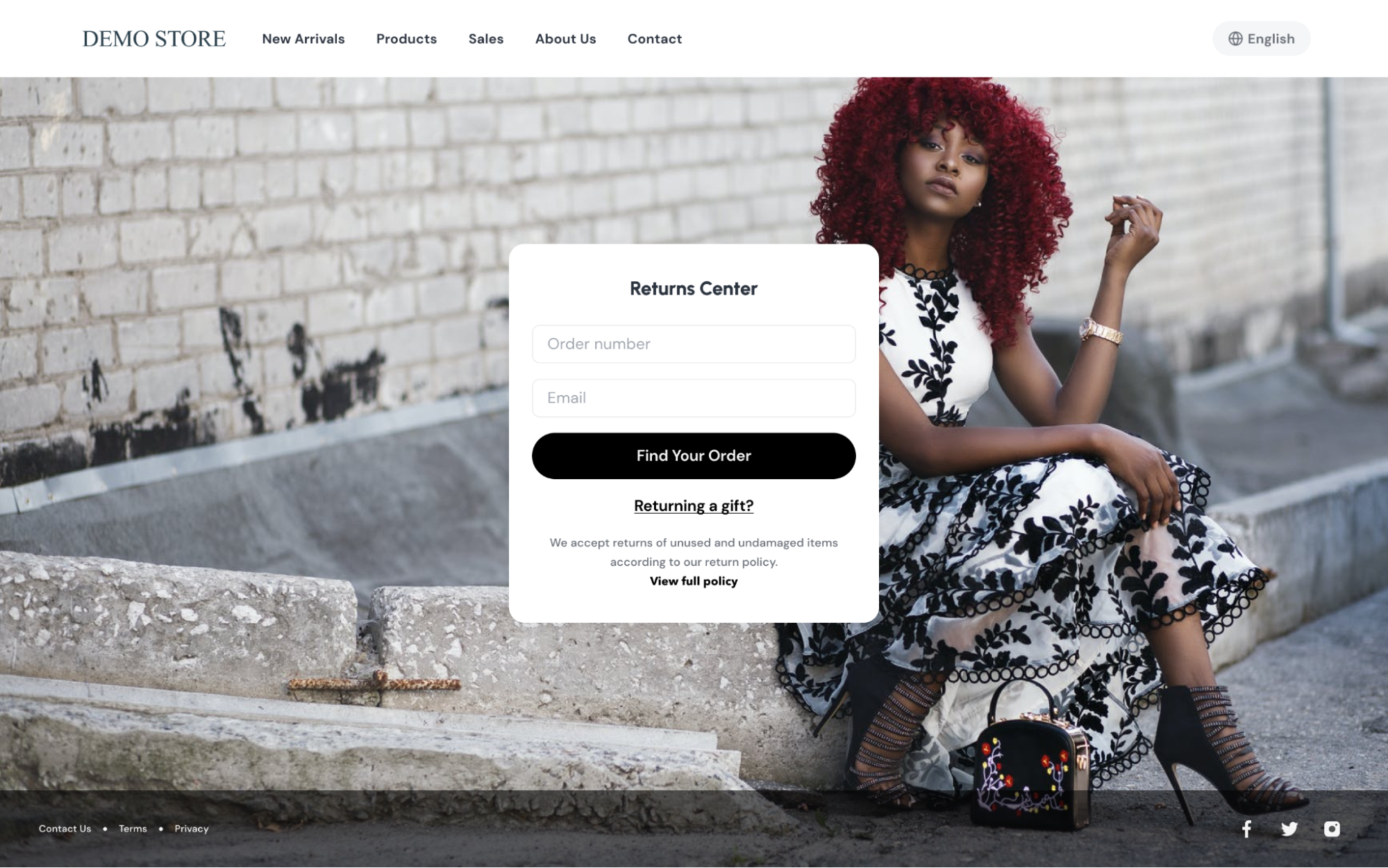Soothe Shopper Anxiety and Streamline BFCM Chaos with AfterShip Returns Automation

More people are shopping during the BFCM weekend than ever. Last year, as a matter of fact, 196 million of us turned out!
But despite all this excitement (and profit), retailers know BFCM comes with challenges.
One of the biggest ones for many merchants is that more sales mean more returns. Typical reasons for returning (like incorrect sizing) don’t disappear. But BFCM also presents unique circumstances that lead to increased returns, like shipping delays, gift returns, products getting damaged in transit, and consumer practices like bracketing.
These increased BFCM returns may seem inevitable, but there are ways to tackle any surge in requests that lessen the impact on your team’s time and can even create positive customer experiences.
Our strategy? Make your return process as smooth and friendly as possible using AI and automation.
Not only will shoppers be more confident buying in the first place, but they’ll feel appreciated and delighted by brands going the extra mile. Streamlining the return process also reduces the burden on customer support teams, who always have plenty to deal with this time of year.
With that in mind, here are four ways retailers can use returns automation to build customer loyalty, deepen relationships, and have a better BFCM season.
1. Make Returns Easy to Find and Submit
Don't leave shoppers with any questions about how to return their purchases.
Start by creating a dedicated return request page on your store website that reflects your brand identity and voice. Make this return experience easy to find by confidently linking to it on your site's navigation and footer.

Better yet, if you're looking for a quick win, building an entirely self-service returns experience is much easier than it sounds—with the right solution, like AfterShip Returns. Shoppers should be able to enter all the necessary information without contacting a customer service representative. You can also make it easy for customers to pull up their order information and auto-populate fields.
Automating approvals and label generation is just the beginning of what current systems offer. Consider adding the most convenient methods for faster package drop-off and improved customer satisfaction.
Many brands now offer label or box-free returns, allowing shoppers to scan a QR code at a nearby carrier or third party. Be sure to consider the international availability of these services, as many are region-locked.
An easier, faster returns process is reassuring for customers. It also builds trust, authority, and your brand's reputation while freeing your customer support team to tackle more important tasks.
2. Inform Shoppers at Each Stage
Once a customer submits a return, brands should provide customers with an automated return merchandise authorization (RMA).
The RMA is a reference number that helps customers track their return status. Keeping these RMAs customized and fully branded is vital to minimize customer confusion and create a more premium shopping experience. They'll instantly know it's coming from you—and have a consistent experience with your brand from first to last touch.

Refrain from treating customers with return requests as a second-class concern. Keep them just as informed about their return as you would if they'd purchased something. Send notifications as their item—and payment—moves through your return process. Remember, just because they're returning something today doesn't mean they won't make another purchase in the future.
AfterShip Returns enables brands to send notifications when:
- A request is submitted.
- A return request is approved.
- A return request has been rejected.
- A return reminder (e.g., to ship items back).
- Return items have been received.
- Return requests have been resolved.
This regular, automatic communication builds trust for customers. Again, we also see how a great returns process helps your busy support teams, as they don't need to reach out and ask where their package is.
AfterShip Returns' customers have seen firsthand how powerful this increased communication can be. They're reporting needing up to 54% fewer customer service agents and seen a 12% drop in return support tickets.
3. Provide Instant Refunds Based on RMA
Who doesn't like instant cash? Automatic refunds speed up the return process—and, most importantly, delight customers.
AfterShip Returns allows retailers to automatically issue a refund when an RMA is updated to:
- In transit
- Delivered to the company
- Marked as received
More sophisticated solutions, like AfterShip Returns, can auto-refund payments in multiple ways. Retailers could issue a store credit, reimburse the original payment method, or apply the refund as a product exchange.
Retailers should send an immediate confirmation email to the customer with the details of the RMA and the refund. The email should communicate when the refund will appear in the customer's account.
Instant refunds make it exceptionally clear that you want to make customers happy! They'll appreciate getting their money faster, and automating refunds will expedite the entire return process.
With AfterShip Returns, customers have seen a reduction in final refund processing lead times by as much as 7 days. That's great for everyone: the returning customer, other shoppers, and the brand itself.
4. Accept Gift Returns
These special returns are often overlooked—but they're never more critical than in peak season when buyers look for products to gift to friends and loved ones. Customers are often unsure how to approach a gift return and open support tickets to get the help they need.

Most importantly, people should be able to return these items without notifying the gift-giver. (You wouldn't be caught dead in an Argyle sweater vest? Grandma will never know.) Doing this might mean accepting returns without the original order number or transaction information, so a gift receipt clearly outlining return or exchange procedures is an excellent way to streamline the process.
If brands approach them carefully, gift returns are an opportunity to make a good impression. When gift recipients have a smooth return experience, they are more likely to shop with the brand in the future—maybe even considering them the next time they want to give a gift.
Surpass Customer Expectations with AfterShip Returns Automation
Retailers love the increased activity of peak season. Within reason, think of a surge in returns as a natural side effect of those sales, not a sign of failing. Instead, approach the return process as an opportunity to delight customers, strengthen your brand, and set the stage for future sales. By optimizing the return process, brands deepen customer relationships and build trust—all while decreasing demand on customer support teams.
AfterShip Returns helps eCommerce companies maximize ROI through AI and automation. By offering a branded return experience that empowers customers, brands secure customer loyalty and streamline operations.
Book a demo today to learn how AfterShip's Return creates next-level post-purchase experiences even during the year's busiest season.

